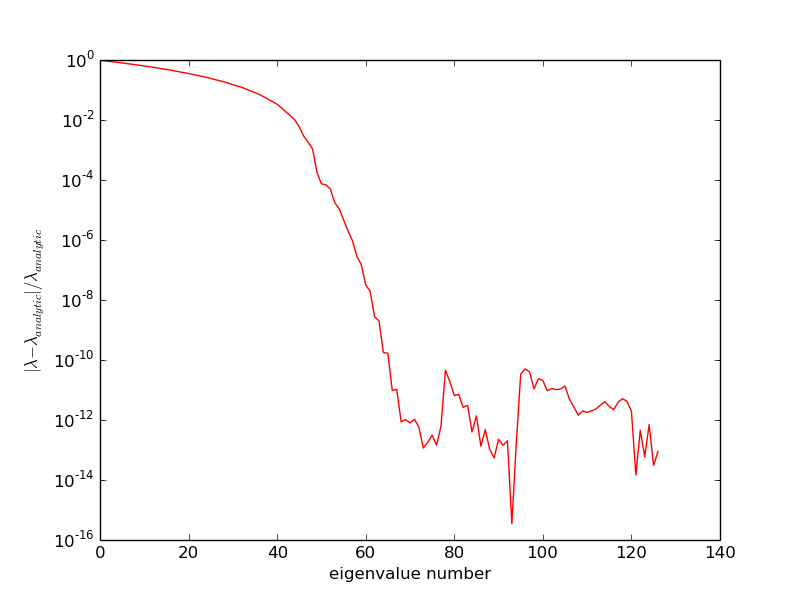Simulations of the Tayler-Spruit Dynamo
Ryan Orvedahl, Ben Brown (CU Boulder), Juri Toomre (CU Boulder)
Initial study
Our initial study is a linear stabilty analysis of the equations we are using to describe the system. We are using the Dedalus code to cary out these calculations and we are the first group to use the code in this way so we must perform many unit-tests of the code to be sure it is doing the correct operations. Dedalus numerically solves for the eigenvalues (frequencies) of the system and our first test was to find the eigenvectors and eigenvalues of the Anelastic equations of motion. A few preliminary figures are shown below:
Figure 1 shows the first three eigenvectors of the linear Anelastic equations in a plane-parallel, isothermal atmosphere. This system has an analytic solution and we compare the numerical eigenvectors to the analytic ones by computing the L2 norm.
Figure 2 shows the relative error between the numerical eigenvalues and the analytic ones. Dedalus is a pseudo-spectral code so we expect to see spectral convergence in the error.

Figure 1: L2 norm of eigenvectors for Anelastic, isothermal, plane-parallel equations.

Figure 2: Relative error in the eigenvalues of the Anelastic, isothermal, plane-parallel equations. The convergence is spectral.
Acknowledgements: The work at CU Boulder is supported by a George Ellery Hale Fellowship. This work utilized the Janus supercomputer, which is supported by the National Science Foundation (award number CNS-0821794) and the University of Colorado Boulder. The Janus supercomputer is a joint effort of the University of Colorado Boulder, the University of Colorado Denver and the National Center for Atmospheric Research.